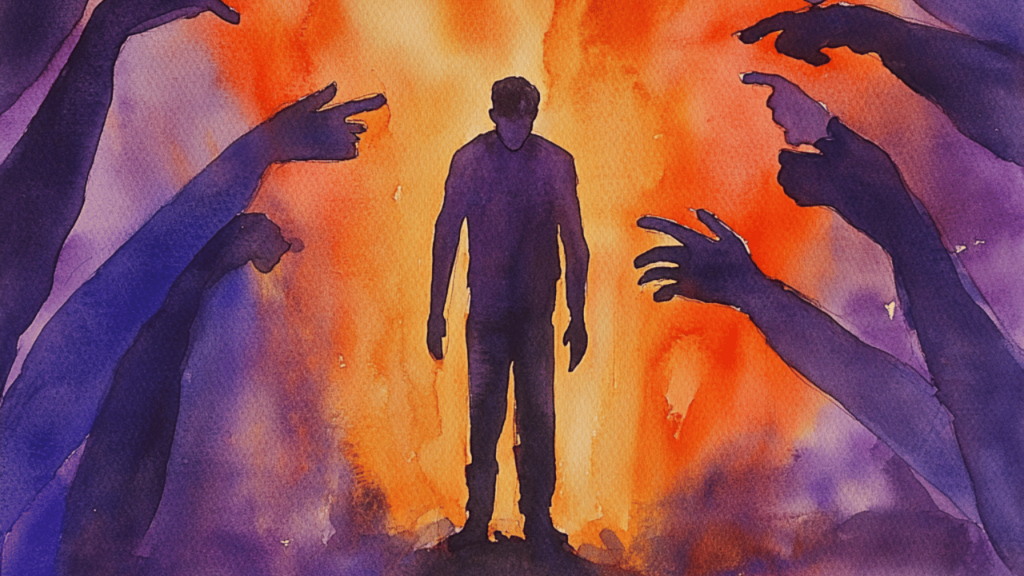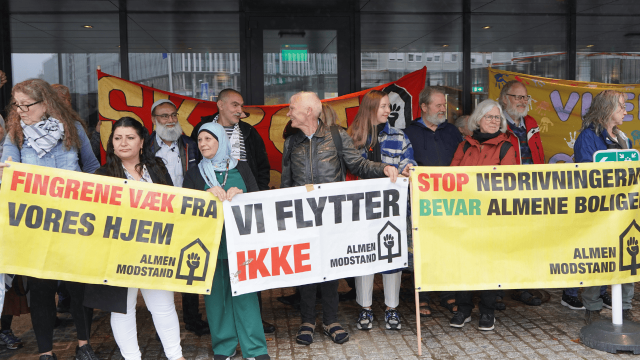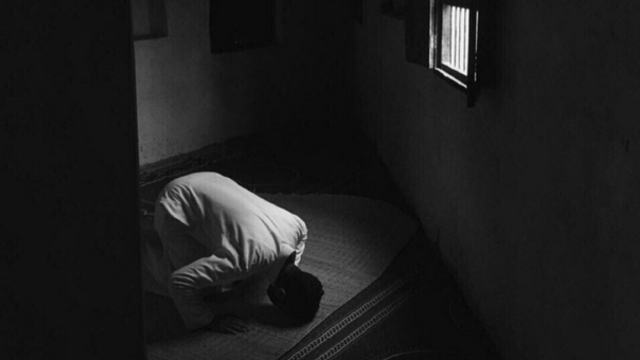What Does the Law Say?
Slanderous denunciation constitutes an offense that infringes on personality
It is defined by the Criminal Code:
“The denunciation, made by any means and directed against a specific person, of a fact that is likely to lead to judicial, administrative or disciplinary sanctions and that one knows to be totally or partially inaccurate, when it is addressed either to a judicial officer or administrative or judicial police, or to an authority having the power to act on it or to refer it to the competent authority, or to the hierarchical superiors or the employer of the person denounced (…)” (Article 226-10 of the Criminal Code).
Slanderous denunciation is sometimes confused with insult, which is an outrageous expression addressed to a person and which does not require a specific fact, or with defamation, which is closer to slander in that it consists of attributing a fact to a person that damages their honor.
Slanderous denunciation is established if the following elements are present:
- The denunciation must be addressed to the following bodies/persons:
- a judicial officer, an administrative or judicial police officer;
- an authority having the power to act on it or to refer it to the competent authority;
- the hierarchical superiors or the employer of the person denounced.
- The reported fact must be liable to judicial, administrative or disciplinary sanctions.
- The denouncer knows the inaccuracy of the reported facts and acts spontaneously. It is not necessary to establish the material falsity of the reported fact. “It is sufficient that by knowingly concealing certain circumstances, the denouncer has presented the fact in a misleading aspect, falsely making it appear as if it should lead to a sanction” (Cass. Crim., July 2, 1975, No. 74-91.093).
- The accusation must precisely target a person or allow them to be identified.
Example: In May 2019, a RATP bus driver who was accused of having refused, for religious reasons, a passenger because of her skirt, filed a complaint for slanderous denunciation.
The Spontaneity of the Denunciation
The denunciation must stem from the author’s own will and be spontaneous. This criterion of spontaneity excludes certain situations:
- The denouncer is under pressure from a third party or a force majeure that they must justify;
- They are required to make the declaration. Thus, the denunciation is not spontaneous when it results from statements collected by the gendarmes during the investigation (Cass. crim., June 16, 1988, No. 87-85.432) or when it is made through reports established by the creditors’ representative in a judicial recovery procedure (Cass. crim., January 14, 2014, No. 12-86.781).
Establishing the Falsity of the Reported Fact
The author of the denunciation must be aware of the falsity or inaccuracy of their statement.
The judge assesses the inaccuracy of the facts according to the following cases:
- The falsity results from a final decision of dismissal, discharge or acquittal of the victim of the denunciation, because the fact is not attributable to them or they did not commit it. In this case, the offense of slanderous denunciation is necessarily established (Court of Cassation, crim., May 6, 2014, No. 13-84.376). A decision to drop charges is not a final decision ending the procedure regarding the reported fact.
- In the absence of such a decision, the judge can sovereignly assess the fraudulent intent of the denouncer, provided that their reasons “contain neither insufficiency, nor contradiction, nor error of law” (Cass. crim., March 13, 1984, No. 83-93.828).
To assess the fraudulent intent of the denouncer, the courts may be interested in the conflictual context that may oppose them to their victim. This is the case, for example, regarding a complaint addressed to the Minister of Justice by a trade unionist against the director of a prison “which clearly reflects a desire for revenge” (Paris, 11th ch., Nov. 9, 2006, Aubin v. Bigot, No. 05/13069).
The proof of good faith of the denouncer can prevent them from being convicted of slanderous denunciation.
Example: judges have accepted the good faith of a pastry shop owner who had accused one of her saleswomen of theft, and whose complaint had resulted in a dismissal. To exonerate the accuser, the court noted that she had gathered serious evidence and conducted preliminary investigations allowing her to believe in the existence of these thefts and the responsibility of the person she had implicated (CA Aix-en-Provence, June 14, 1999, Diener v. Bernaud).
This is why it is necessary to prove this particular intention, which is the bad faith of the accuser, which cannot result from the mere observation that they acted with “blameworthy carelessness” (Cass. crim., February 19, 2019, No. 18-80.195).
The European Court of Human Rights recently reminded France that interference with the exercise of freedom of expression (protected by Article 10 of the Convention for the Protection of Human Rights and Fundamental Freedoms) must be proportionate.
It has thus been established that the circumstance in which the statements attributed to an individual were surrounded by stylistic precautions (notably the interrogative form) is a factor to be taken into account in the context of proportionality control, as well as the nature and severity of the sanctions imposed (ECHR, March 26, 2020, No. 59636/16, Tête v. France).
What are the penalties for slanderous denunciation?
Slanderous denunciation constitutes an offense punishable by a fine of €45,000 and five (5) years of imprisonment if the perpetrator of the offense is a natural person (Article 226-10 of the Penal Code). Additional penalties may be added (Art. 226-31 of the Penal Code):
- Deprivation of civic, civil, and family rights;
- Prohibition from exercising the social or professional activity in which the offense was committed;
- Dissemination of the judge’s decision.
- If the offense is committed by a legal entity (a company or an association, for example), it is punishable by a fine of €275,000.
What is the statute of limitations?
The victim has a period of six (6) years to file a complaint for slanderous denunciation. The limitation period begins from the day the denunciation reaches the authority with the power to act on it or to refer it to the competent authority (Crim. October 17, 2006, No. 05-85.519).
However, Article 226-11 of the Penal Code specifies that “When the reported fact has led to criminal proceedings, a decision on the proceedings against the author of the denunciation can only be made after the final decision ending the procedure concerning the reported fact“.
This means that one must wait to see what justice pronounces regarding the reported fact to judge whether or not the denunciation is slanderous. The existence of these two judicial procedures leads to the suspension of the limitation period.
What to do if you are a victim of slanderous denunciation?
- You must gather all elements proving that you did not commit the facts of which you are accused, or that the facts are inaccurate and especially that the accuser was aware of this.
- Collect testimonies, screenshots.
- You can file a complaint for slanderous denunciation.
- You can directly seize the correctional court if the identity of the accuser is known. The competent jurisdiction is that of the place of residence of the accused or that of the place where the facts were committed.
- If you wish to obtain compensation for the harm suffered, you must file a complaint with civil party constitution. But this is subject in this context to the filing of a simple complaint and the passage of a period of three (3) months.
- You can request Equitas who will accompany you in your procedures.
APPLICABLE REFERENCES
Art. 226-10 and 226-11 of the Penal Code; art. 226-31 of the Penal Code. Case law: Cass. Crim., July 2, 1975, No. 74-91.093; Cass. crim., May 6, 2014 / No. 13-84.376; Cass. crim., March 13, 1984, No. 83-93.828; CA Aix-en-Provence, June 14, 1999, Diener v. Bernaud, Jurisdata No. 99-043104; Cass. crim., February 19, 2019, No. 18-80.195; Cass. crim., June 16, 1988, No. 87-85.432; Cass. Crim., January 14, 2014, No. 12-86.781; Cass. crim., October 17, 2006, No. 05-85.519.




